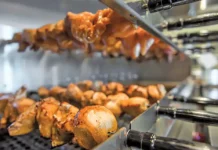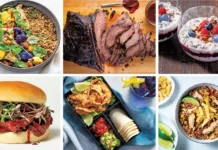
It’s estimated that for every dollar spent in workers’ compensation claims, an employer will pay out four to ten times that in indirect costs due to lost productivity resulting from supervisors leaving their post to investigate the case, other employees driving the injured to the doctor, lost revenue of the injured worker and more.
For example, in the event of a minor workplace injury such as a strain or laceration, the direct cost reflected in the medical expense could be $500. The total cost of this injury, though, may actually exceed $5,500 when considering the combination of all the indirect costs. Working on an average profit margin of 15%, this small-to-mid-size company would have to sell over $36,000 in product or services to recover such a loss. Imagine a workers’ compensation claim where the employee suffers a more serious injury?
These economics, coupled with recent increases in Occupational Safety and Health Administration (OSHA) fines, a record number of OSHA citations and a growing force of U.S. Department of Labor inspectors charged with upholding OSHA safety standards, has brought workplace safety to the forefront once again for many of today’s businesses.
Maintaining Workplace Safety Standards.
In order to protect employees from the biggest workplace safety issues, including but not limited to ergonomics, falls, chemical hazards, scaffolding accidents, electrical shock and contact with machinery top risk services experts recommend viewing OSHA standards as the minimum requirement for your restaurant/food service business.
The trouble is that many smaller restaurants have little or no resources to meet or exceed compliance. Maintaining membership in industry organizations and engaging a risk consultant in your policy making will help you determine what that higher level of compliance should be for your business.
It is recommended that businesses leverage their internal technical expertise to create a formal safety program, properly educate both employees and supervisors on the program and maintain program accountability with enforcement across departments and job functions.
Here’s how these principles should play out in any organization:
Leveraging Technical Expertise – Whether it’s your broker, third party administrator or internal HR/Safety professional, make sure there’s a point person within or closely connected to your organization who is knowledgeable about relevant OSHA standards and positioned to drive expectations – someone with the authority to change and adapt internal regulations as needed.
Document a Formal Safety Program – Using OSHA standards as a starting point, help your organization determine which company-specific safety requirements should be included in your formal safety program. First and foremost, define “safety” and what that means for your organization – are you going to meet OSHA standards or be best in class? Incorporating details as specific as how machines should be shut down, where employees should stand when operating each piece of equipment, identifying when personal fall arrest systems should be used and documenting the company’s return to work program. Make sure program requirements meet the current scope of your business operations and are updated regularly as compliance standards change. Instructions for employees must be simple and easy to understand.
Education – Educating supervisors and employees alike on their role in the safety program will be critical to its success and requires a great amount of time and effort. Training supervisors on why you are implementing the programs, what exposures exist and changes in the work environment or law that require this program to be implemented, will be important for buy-in as it relates to performance improvement. Employees need to understand how the program will impact their daily work. They want consistency and communication so employee involvement in either a safety committee or a group that educates their peers on big picture issues related to safety will be important for employee buy-in. Train employees and managers in terms they will understand and enjoy, catering to any language barriers as well, taking advantage of technology including audio-visual and web-based training to meet the needs of the younger workforce, while also finding unique ways to make training new and different for the older crowd that isn’t necessarily familiar with the new technology.
Accountability/Enforcement – Without proper enforcement, there’s no guarantee that a safety program will be effective. Establish consistent avenues of accountability with clear roles and responsibilities. These may include easily understood performance measurements and metrics, clearly defined accountability activities such as mandating training or conducting job site inspections and clearly spelling out disciplinary action for those not following safety rules. The most important mechanism of accountability is to identify and reward employees for following safe work practices, not just heavy disciplinary action for those who don’t. Studies show that today’s generation responds more positively to behavioral-based safety programs where supervisors provide on the job coaching instead of writing citations. Companies can then track the number of coaching sessions against their injury or accident rate, which helps create reward or incentive programs.
The primary goal of today’s employers is to create a safe environment for their employees. Add to that the financial drawbacks caused by workplace injuries and you’ve got a business case for creating the most thorough and site-specific safety program possible.
Contact your risk expert today to help you tailor a safety program, its training and enforcement to the specific needs of your business — one that will both meet and exceed current OSHA standards and help your business maintain compliance long term.























